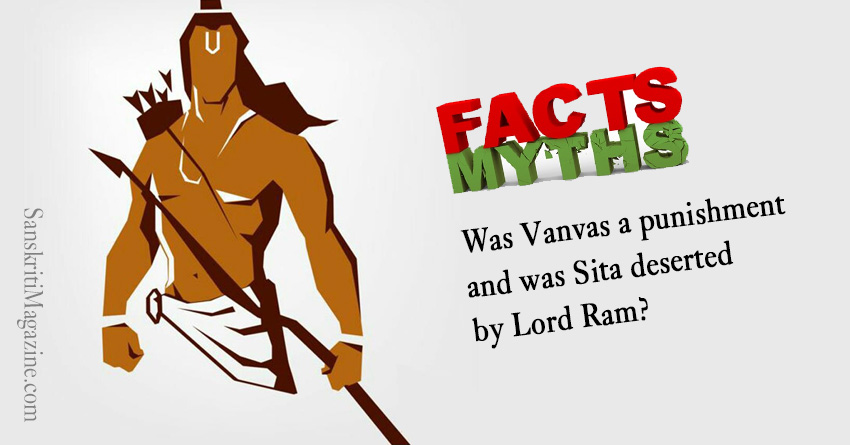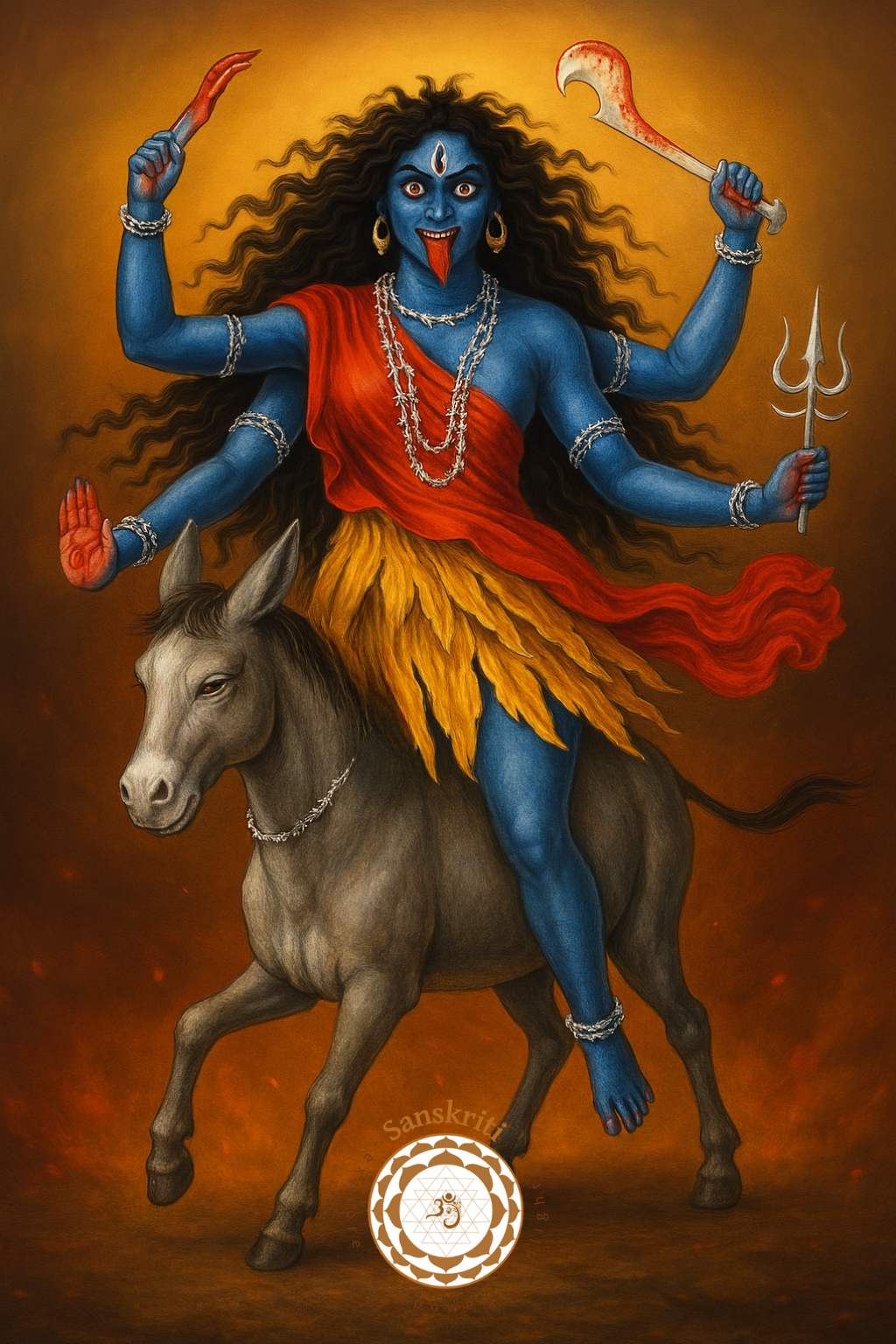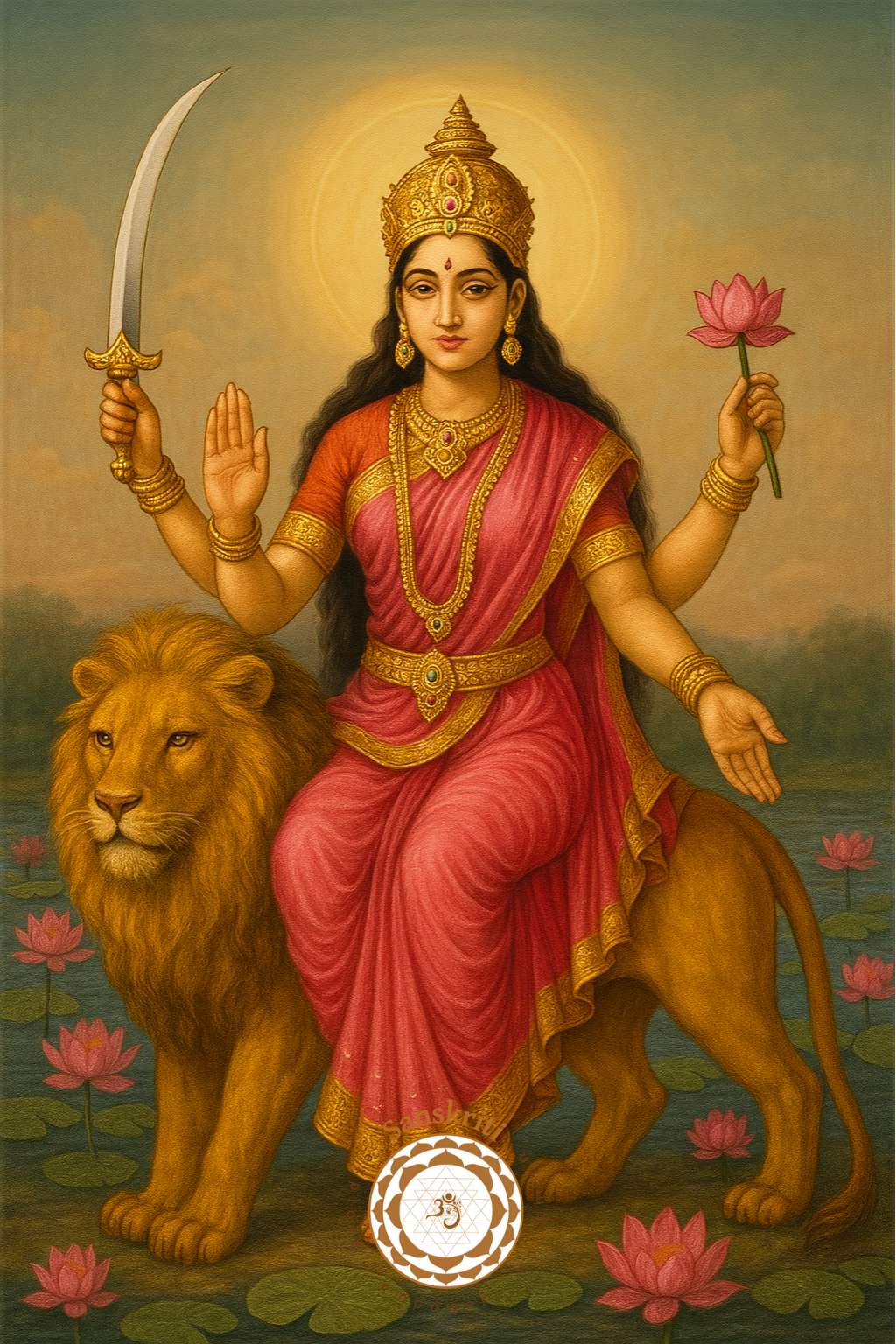PART 1 OF 4:
Ancient Aryavart in pre-Mahabharat times was under the expert supervision of highly qualified Rushis. They would teach Vedic vidya to all men and women. Therefore, when they would pass out of gurukuls they would at least in theory be on the same page. They would then be apprenticed to different people depending on their abilities and availability. This could also be in another Rajya. In those days they treated their mentees as children and were supposed to impart all their knowledge and so do their rushi rin (debt). For example, Dasharath’s daughter Shanta was apprenticed with another raja but people misinterpret it as adoption. This is wrong since they were all in gurukuls which didn’t require money.
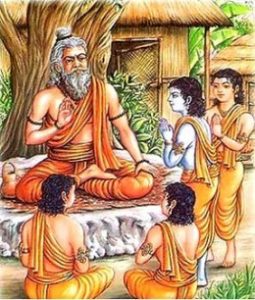 In those days they didn’t use currency. The land had plenty for every human need and all they had to do was share the resources like one big family. It used to be one of the raja’s duties to co-ordinate and manage all this. When we read numerous adventures of Padma(Hram), they illustrate this point. People like Shabari etc. are not bhaktas the way it is understood today. They are all bhaktas because they were doing their duties sattvically. They have all been given a posting of tending certain parts of the oshadhi vanas and as rajas it was the duty of Hram and his team to supervise and manage the people.
In those days they didn’t use currency. The land had plenty for every human need and all they had to do was share the resources like one big family. It used to be one of the raja’s duties to co-ordinate and manage all this. When we read numerous adventures of Padma(Hram), they illustrate this point. People like Shabari etc. are not bhaktas the way it is understood today. They are all bhaktas because they were doing their duties sattvically. They have all been given a posting of tending certain parts of the oshadhi vanas and as rajas it was the duty of Hram and his team to supervise and manage the people.
Since the basic structure of entire Aryavarta society was the same we can safely conclude that they did not consider themselves as being separate kingdoms with completely different agendas. Whenever they quarrelled it could be due to reasons of governance and there would be some who would want to be
governor. It was not about owing another’s kingdom and his wealth etc. since no-one was owner. Even citizens did not own any property. They only managed certain areas and were given accommodation only to live in. Since they were eco-friendly and understood the importance of maintaining natural resources as a main line of defence, vast areas were full of vanas. These had different names depending to describe what they were. All these were within the jurisdiction of the rajas and they had to maintain them properly.
Women were highly educated too and were trained to do their swadharma, which means serving society and dharma while working towards one’s own sattvic/spiritual development. The two often went hand in hand. Otherwise things would be impossible and chaotic the way it is today. Therefore we see two parts to the government. One is the kshatriya side in charge of law and order and defence. The other was the civil government side headed mainly by women like Kaikeyi, Kaushalya, Soumitra, and in later years, Meerabai. But these remits were flexible too, because we see that Kaikeyi played a pivotal role in the war and was Dashrath’s charioteer. This shows her high level of expertise which comes only with great practice. In those days, the charioteer was the same as a navigator today and it was an even more difficult task because they chose not to rely on machines. This was obviously because they wanted to improve their karmas and this cannot be done if machines do everything. Deterioration sets in when one does not adequately use one’s brains.
Ancient Aryavarta society also strengthened itself by doing many yagyas. These involved an actual yagya vedi, homa, havan etc. which sometimes would take many days. There were also domestic yagyas done by householders both husband and wife. Today, the word yagya is being incorrectly used for any group effort and this is wrong since that should be called yatna. Etymologically the word agneya or used so it should involve agni, not only on the outside but also the inner agni tattva.
We are all living in maya which has a corrosive effect on people. That is why when we read the histories of ancient people we see that at some point in time they were powerful and successful but eventually deterioration set in and then an avatar had to come and remove them from the planet, i.e. help clean the inner and outer vana. When one checks the meanings of the words Nagas, Kesins and Munis, one finds that they were highly advanced yogis with numerous riddhi, siddhis. The Kesins had long hair which is supposed to be good conductor of spiritual energies. Nagas were known to have forked tongues, which is what yogis do when practicing kechhari yoga. Thus, when Uloopi, a Naga kanya fell in love with Arjuna, her people were not happy for her to marry someone who was yogically inferior. The symbol of the Naga people at many ancient sites of worship show two snakes intertwined. This has always been the yogic symbol of Ida and Pingala Nadis
with the Sushumna in the middle. Then gradually all these people started to become corrupt and then we there would be an avatar movement, or upheaval of divine energies occurring that rectifies matters.
It is necessary to bear in mind that an Avatar is not a one man effort. An entire group of people get involved. It would be unrealistic and childish to expect that an Avatar appears like superman and in a twinkling everything is made perfect. This is also detrimental because people then tend to mix up theologies and claim that Jesus too is an Avatar and use that as an arguing point for conversions. The way Avatar stories have been written has also seen changes over the ages. The ancient Avatar events were described as similes using an animal. In later years people did not do that. In the book ‘Light on the Yogasutras of Pantanjali’ by B.K.S. Iyengar, on page 54, there is a good explanation of the Kurma Avatar. He writes that “Atman acts as a tortoise to lift and keep the diaphragm floating upwards, allowing the breath to come in contact with the inner elements of the body.” This happens during pranayam. Other avatar stories are to be read in a similar way. He also compares the body to the bow in yoga.
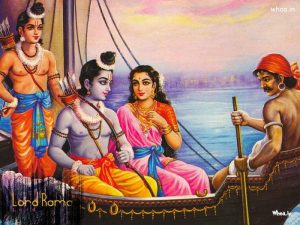 The Varha Avatar is described as a boar because when preparing a yagya vedi, mud churned up by boars is used, probably due to some specific composition of the soil. Also, the bristles on its back are a simile for the three holy grass Munja, Durva, and Kusha which are necessary for yagyas. The word Varha can be etymologically broken up into Va+Hra. This probably means Va for vayu and Hra meaning bija mantra for surya and so, agni tattva too.
The Varha Avatar is described as a boar because when preparing a yagya vedi, mud churned up by boars is used, probably due to some specific composition of the soil. Also, the bristles on its back are a simile for the three holy grass Munja, Durva, and Kusha which are necessary for yagyas. The word Varha can be etymologically broken up into Va+Hra. This probably means Va for vayu and Hra meaning bija mantra for surya and so, agni tattva too.
Ramayana written by Tulsi and Valmiki are most popular today. They are epic poems, not historical reports and therefore should not always be taken literally. They probably are a mix of some historical facts, a lot of metaphors and definitely are allegories. Recently, a lot of ancient temples/idols of Vishnu have been found in Russia, and these were probably built before the ice age when Russia had a warmer climate. Since Lord Ram was not likely to build his own temple, one can assume that they were built much later. They did not need temples before and during Ram’s time since they followed the Vedic system which is perfect. But in later years the need was probably felt and so temples were constructed with idols/deities. Just the way if one is good at maths one does not need a calculator. So, one may safely assume that Treta Yug was before that ice age.
It has recently been discovered that the geography, flora, fauna and animals mentioned in the Valmiki Ramayan are similar to those found today. Since the subcontinent has changed a lot since the ice age, one may safely conclude that this book was written much later and that Valmiki was not a contemporary of Ram. Tulsi was alive during the Mughal times so its likely that he was influenced by the corruption in thought that was prevalent in those days, regarding the limited role of women in family and society. Gurukuls and society were gradually being ruined by the conquerors. According to popular folklore both authors had been spurned by their wives, after which they underwent a transformation, became saints and wrote the Ramayan. So it is likely that they probably expressed their frustration by writing these epic poems. They do appear to be quite prejudiced against women as both tend to portray most smart women as being bitchy or helpless. Just writing the Ramayan does not make one a ‘saint’. And, even after doing a lot of tapas and meditation, a person could still be comparatively inefficient.
The word Valmiki means ant-hill and the mud from a white ant’s hill was used for yagyas as was the mud dug up by boars. Vedic rushis did not have individual names but took on the ‘title’ of their predecessors. So, in the way that many ants get together to make an ant-hill, in the same way many people’s contribution must have been incorporated into the Ramayana. Valmiki was said to have been born of low caste parents. In that case its likely that he was born in Kaliyug since in Vedic times they did not believe in caste the way people do in kaliyug. Varnashram is not the same as caste system. One has to also bear in mind that a lot of information could have been distorted when people re-wrote the texts through the tough centuries of slavery.
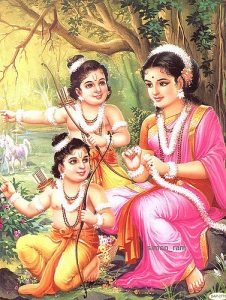 Most ancient societies were matriarchal; especially ancient Vedic society that knew the importance of the feminine energies. Also, its the woman’s mitochondria that determines most of the characteristics of the child which is why the role of the mother was very important and they were nurtured accordingly. This could be one of the reasons why Sita was sent to ashram. Because the nurturing of the child starts from conception and the guidance of rushis is important. Even Abhimanyu learnt everything inside his mother’s stomach. This means that he was already being mentored by Krushna and surely warfare is not the only thing he must have learnt although it must have been his specialist area. Also, warfare itself is a very difficult subject and not only about using sword. Also, since these are just case studies there is no reason to believe that others did not do the same. So, it could be likely that all pregnant women went to ashrams to give their unborn children a good start.
Most ancient societies were matriarchal; especially ancient Vedic society that knew the importance of the feminine energies. Also, its the woman’s mitochondria that determines most of the characteristics of the child which is why the role of the mother was very important and they were nurtured accordingly. This could be one of the reasons why Sita was sent to ashram. Because the nurturing of the child starts from conception and the guidance of rushis is important. Even Abhimanyu learnt everything inside his mother’s stomach. This means that he was already being mentored by Krushna and surely warfare is not the only thing he must have learnt although it must have been his specialist area. Also, warfare itself is a very difficult subject and not only about using sword. Also, since these are just case studies there is no reason to believe that others did not do the same. So, it could be likely that all pregnant women went to ashrams to give their unborn children a good start.
In those days the focus was on doing one’s duties just like an ideal family. When one reads the details of governance in the Mahabharat one gets a better idea of how society functioned in ancient Vedic times. Women were treated as equals and could do any role depending on their abilities, karmas and swadharma. So there is no reason to believe that Sita was a helpless woman who faithfully followed her husband to serve him or that Kaikeyi and Manthara were evil simply because they dared to be assertive and express their opinion. Most popular versions of the Ramayan speak of how Ram, Sita and Laxman went for a vanavas on the command of their step-mother Kaikeyi. This has been interpreted as being a punishment or exile, But is that really true? Later, it is believed that Ram deserted Sita on the suggestion of a dhobi. Many people have therefore expressed concern about the attitude of the Suryavanshis and also our entire Vedic system, as some believe that it discriminated against women in general and Sita in particular. People like Nina Paley have even written limericks like ‘Sita singing the Blues’ that can be found on the internet. There is an old Gujarati song that laments the fact that Ram does not match up to Sita because he asked her to take agni parixa and then deserted her. Even popular speakers keep re-iterating that although Ram was Maryadapurushottam, he was unfair to his wife, and also that Kaikeyi and Manthara were villains for having suggested that they should go on a vanavas while the kingdom was given to Bharat.
Before being judgemental and blaming anyone in the story, it is necessary to look at different variables based on certain facts. In those days, the kingdom was not any person’s property but had a proper government similar to the one we have today. This can be read on the internet. The Suryavanshis were warriors of the highest calibre. If the rulers of a land are warriors, it logically follows that the rest of the society are also warriors but of a lower calibre. Therefore we can safely conclude that they had a military society, perhaps similar to the Shaolin Temple. It is a fact acknowledged by most martial artists that it were the Buddhists who carried the Vedic fighting and healing systems to China. Since Buddha and his group were trained in the Vedic system, one can guess how the ancient Vedic society must have been, based on the history and performance of the Shaolin monks that can be seen in movies and youtube as well as in books.
~ Sona Parivraj

